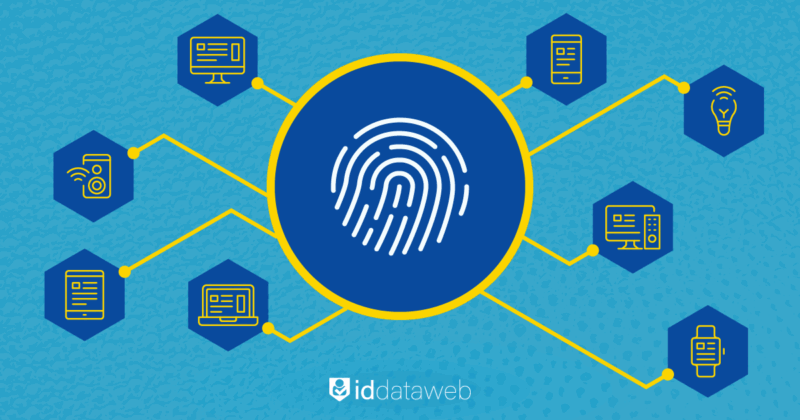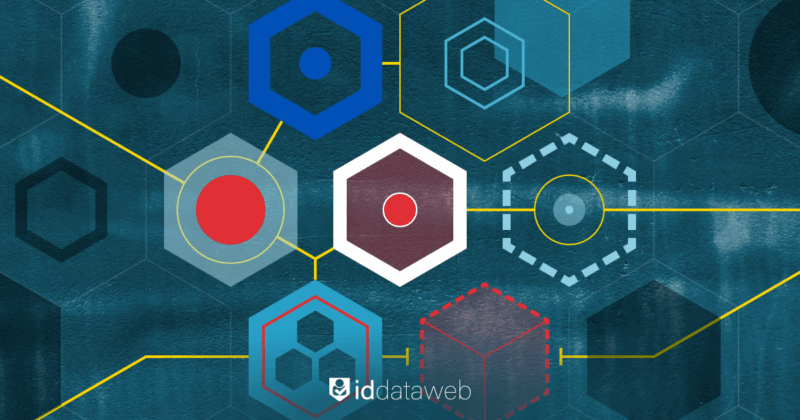For many organizations today, the vast majority of customer interactions take place online. As services have shifted online, the need to protect sensitive information has grown exponentially.
The digital realm is increasingly fraught with dangers. Cyberthreats are evolving at an unprecedented pace, with malicious actors employing ever more sophisticated tactics. Data breaches have become alarmingly common, exposing sensitive information and causing significant financial and reputational damage.
The limitations of traditional authentication methods, such as passwords, become glaringly evident in this context. Passwords can be compromised through phishing, brute force attacks, and credential stuffing.
Adaptive authentication offers a sophisticated, flexible solution to solve this pressing need. It offers an intelligent means to verify that users are who they say they are, making sure access to is only granted to legitimate users.
This blog post will explain what adaptive authentication is, contrasting it with its popular counterpart, static multi-factor authentication (MFA).
Overview of Adaptive Authentication
Adaptive authentication is something of a paradigm shift in how organizations verify users. Unlike traditional approaches to authentication that rely solely on static credentials, adaptive authentication leverages contextual information to gauge the risk of granting access to a user.
These factors can range from if the user is trying to gain access from a different device than they usually do, to their geographic location, to their behavioral patterns. Analyzing these elements in real-time, adaptive authentication systems can make nuanced decisions about whether a user should be passed through, or further scrutinized.
For example, a user logging in from a familiar device and location might face minimal authentication requirements, such as a simple password entry. Conversely, an attempt from an unfamiliar device and location could trigger additional security measures, such as biometric verification or a one-time passcode.
Since this approach is dynamic, it allows security teams to configure verification flows based on assessed risk levels. Meaning, that if a user is deemed low-risk, they can be passed through and granted access with few barriers. On the other hand, if a user is medium-risk, they can be asked for further verification that will confirm their physical identity, while high-risk users can be outright denied.
In essence, adaptive authentication transforms the rigid “one-size-fits-all” model into a more personalized and context-aware security solution.
How Adaptive Authentication Works
The functionality of adaptive authentication is rooted in real-time risk assessment. When a user attempts to access a system, the adaptive authentication mechanism springs into action. It evaluates various contextual factors, including:
- Device Information: The type, model, and even the security posture of the device being used.
- Location Data: The geographic location of the user, compared against typical login locations.
- Behavioral Patterns: User behavior, such as typing speed, mouse movements, and usual login times.
By analyzing these factors, the system assigns a risk score to the access attempt. A high-risk score results in denial or additional verification steps.
Business Problems Solved by Adaptive Authentication
Threats like phishing and credential theft remain significant risks, especially for businesses relying on static passwords. Adaptive authentication offers a solution to these challenges.
Enhancing Security Posture
One of the most compelling business problems that adaptive authentication solves is enhancing an organization’s overall security posture. Traditional authentication methods, such as static passwords, are increasingly vulnerable to a variety of attacks. Phishing schemes, credential stuffing, and brute force attacks are just a few examples of how easily passwords can be compromised.
Adaptive authentication mitigates these risks by incorporating a multitude of factors into the verification process. By doing so, it significantly reduces the likelihood of unauthorized access. For instance, even if a password is compromised, additional contextual checks, such as device recognition and geolocation, provide an extra layer of security that is difficult for attackers to bypass.
Reducing Friction for Legitimate Users
Security measures often come at the cost of user experience. Adaptive authentication balances security and usability. One of its standout advantages is its ability to reduce friction for legitimate users. In many traditional systems, users are subjected to the same level of security checks regardless of the context. This across-the-board approach can be cumbersome and frustrating, particularly for regular users who access systems frequently.
Compliance and Regulatory Requirements
At a point where data privacy regulations are becoming increasingly stringent, compliance with data privacy standards is becoming a larger area of business concern.
Laws such as the General Data Protection Regulation (GDPR) in Europe and the Health Insurance Portability and Accountability Act (HIPAA) in the United States impose strict requirements on how personal data is handled and protected.
This is especially important when handling Subject Access Requests, as these involve providing individuals with access to personal data. By verifying the identity of requestors through adaptive authentication, businesses can prevent unauthorized access and ensure that personal information is disclosed only to the rightful owners.
Adaptive Authentication vs MFA
At its core, Adaptive authentication is a dynamic form of Multi-Factor Authentication (MFA). Understanding the distinctions between simple multi-factor authentication and adaptive authentication can help organizations choose the best approach for their needs.
What is Multifactor authentication (MFA)
Multi-Factor Authentication (MFA) is a widely used security measure that requires users to provide two or more verification factors to gain access to a system.
These factors typically include something the user knows (such as a password), something the user has (such as a smartphone or hardware token), and something the user is (such as a fingerprint or facial recognition).
The idea behind MFA is to provide an additional layer of security, making it more challenging for attackers to gain unauthorized access. Even if one factor is compromised, the other factors provide a safeguard. MFA has been a cornerstone of digital security, offering a robust defense against common attack vectors such as phishing and credential theft.
Key Differences Between Adaptive Authentication and MFA
While both adaptive authentication and MFA enhance security, they do so differently. MFA uses a fixed set of steps for every login attempt, providing consistent security but sometimes at the cost of convenience.
In contrast, adaptive authentication is flexible, adjusting requirements based on real-time risk assessments. If an adaptive authentication system detects an unusual login attempt—such as from a new device or a different geographical location—it may prompt the user for additional verification, such as answering security questions or providing a biometric identifier.
This flexibility makes adaptive authentication more efficient and user-friendly, as it minimizes unnecessary authentication steps while still maintaining a high level of security.
Use Cases and Scenarios
Static MFA is often employed in scenarios where the risk of unauthorized access is high, and the potential consequences of a breach are severe. For instance, financial institutions commonly use MFA to protect online banking services.
Adaptive authentication, on the other hand, is particularly useful in environments where user experience is a critical consideration. For example, in e-commerce, where user convenience is paramount, adaptive authentication can streamline the checkout process for regular customers by minimizing security prompts.
At the same time, it can apply stricter measures for new users or unusual transactions, thereby balancing security and usability.
Build a tailored authentication solution for your business
For businesses looking to enhance their security posture, AXN Manage offers a robust and adaptable solution. By leveraging ID Dataweb’s orchestration of 70 different attribute providers through the “Manage” Attribute Exchange Network, organizations can access a comprehensive risk engine. This advanced setup supports both adaptive authentication and FastTap MFA, providing real-time, context-aware protection tailored to each interaction’s specific needs.
AXN Manage conducts passive risk profiling, analyzing device, network, location, and user behavior risks, along with verifying personally identifiable information (PII). This continuous risk assessment enables businesses to implement a Zero Trust policy, adapting security measures based on real-time conditions and minimizing friction for legitimate users.
In situations where additional verification is needed, Fast Tap MFA complements AXN Manage’s adaptive authentication capabilities. It offers multi-factor authentication by sending a link or OTP to the phone on record, ensuring that even if a device is flagged as risky, legitimate users can easily authenticate. This process includes proximity checks and device fingerprinting, enhancing security against phishing attacks and other threats.
To strengthen your organization’s posture against account takeovers and identity fraud, contact us for a demo today.
Conclusion
In short, adaptive authentication offers a dynamic and intelligent approach to security, providing robust protection against unauthorized access while minimizing friction for legitimate users.
Adaptive authentication adjusts to the context, offering a tailored user experience and enhanced security. Its ability to analyze a wide range of contextual factors allows it to make real-time risk assessments, ensuring that security measures are proportional to the assessed risk. This flexibility makes it an ideal solution for organizations seeking to balance security and usability.
Looking ahead, the future of authentication will likely see continued innovation and advancements. Technologies like artificial intelligence (AI) and machine learning (ML) are expected to play an increasingly significant role in developing adaptive authentication systems.
These technologies can enhance the accuracy of risk assessments and enable more sophisticated detection of abnormal behavior. Additionally, biometric authentication methods, such as facial recognition and voice recognition, are likely to become more prevalent, offering even more secure and user-friendly authentication options. As these technologies continue to evolve, adaptive authentication systems will become even more effective at protecting sensitive information and providing a seamless user experience.













